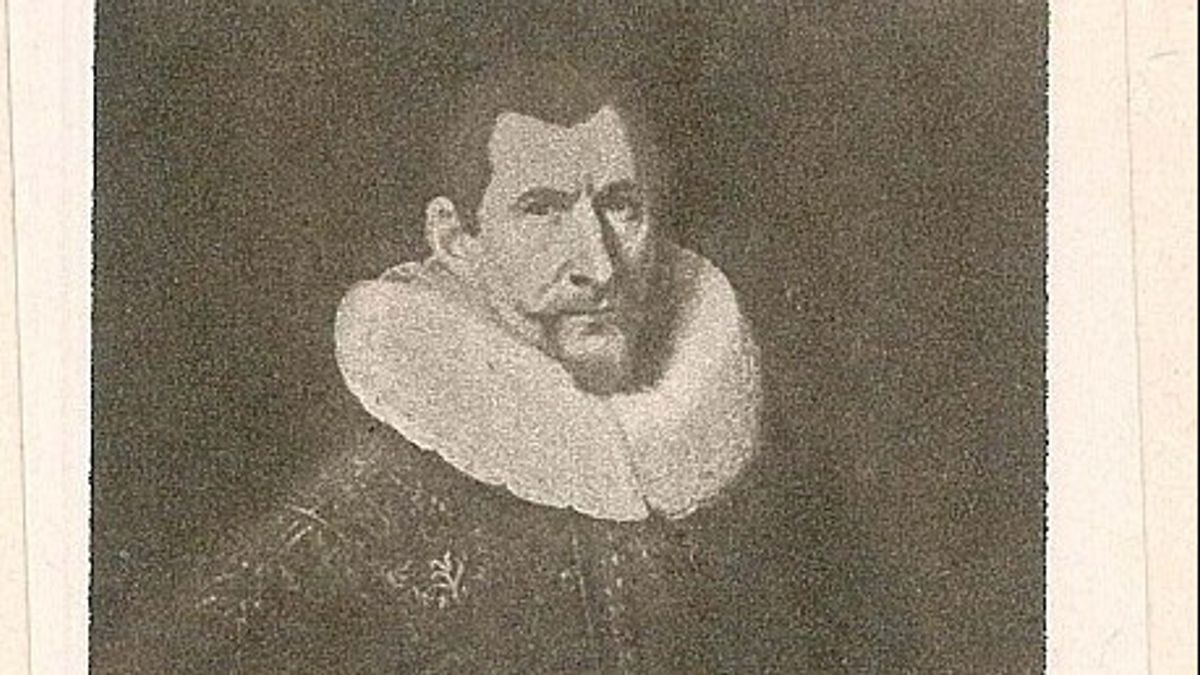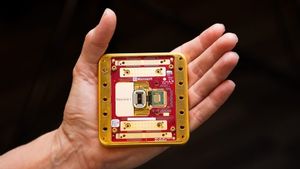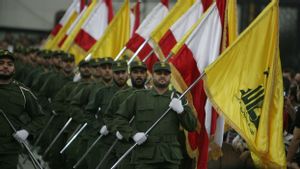JAKARTA - Jan Pieterszoon Coen is one of the most famous names in the history of Dutch colonialism in Indonesia. The man who served as Governor General of the VOC twice --1619-1623 and 1627-1629-- was the figure who had the most success in bringing the VOC. He is also the one who perpetuates Dutch rule in Indonesia. Coen is a hero to his successors. The euphoria even continued hundreds of years after Coen's heyday. The statue of Coen in Batavia is one such form.
Coen's influence on the development of the VOC was immense. Thanks to his well-known political program, Discourse on the Indies State, Coen, who at that time served as chief bookkeeper and trade director in Banten, placed Jayakarta in an important position for Dutch welfare. Young Coen, at the age of 28, immediately emphasized his opinion regarding the conquest of the Indies (Indonesia) in two arguments.
“Coen based his opinion on two arguments. First, that trade with the East is necessary for the welfare of the Dutch Republic. And second, that the Dutch have the legal right to continue this trade and even monopolize trade in many places, "said Bernard HM Vlekke in the book Nusantara (1961).
This political program succeeded in convincing 17 directors of the Dutch VOC trading association, known as Heeren Zeventien. Moreover, Coen was known to have mastered trade, even from the age of 13. Coen was the only one who drew the conclusion that the position of the Dutch trading in the Indies region was legally strong. Through his policies, Pieterszoon Coen was regarded as the foundation stone of Dutch colonialism in Indonesia.

However, he faltered politically. Some of the things that Coen considered were none other than that the spice trade would never quite cover all the travel expenses. This condition was exacerbated by the trade competition of the British trading partner, the East India Company (EIC). Therefore, Coen suggested that Heeren Zeventien authorize the establishment of various Dutch settlements to protect the interests of the VOC in the Indies.
"He developed his political program as follows: ensuring total ownership of several areas, for example Bacan Island in Maluku, Ambon and Banda, and fortified ports in Banten and Jayakarta," Bernard.
In this way, groups of Dutch people were able to develop and facilitate the VOC monopoly rate in their respective regions. Then, slaves from various countries and regions of the archipelago were imported. And the Company no longer needed to depend on the will of the kings of the archipelago.
Later, by carrying out the invasion, the Company became highly respected, so that the natives were so loyal in obeying their obligation to monopolize natural resources. Right after being appointed governor-general in 1918, Coen slowly and quietly began to wrest the conquest of Jayakarta. This resulted in 1619. This was the first milestone in Dutch rule in the archipelago which would last for hundreds of years.
Jan Pieterszoon Coen statue
Even though Coen died in Batavia on September 21, 1629, his figure was still so popular in Batavia for hundreds of years. This was evidenced by the existence of a large celebration in the form of the 250th anniversary of the City of Batavia, May 29, 1869.
At that time the Company made a big celebration filled with orgies for three days. Interestingly, in a party atmosphere, the owner of the celebration also inaugurated the construction of a bronze statue of Jan Pieterszoon Coen in front of the Grote Huis or the White Palace in Weltevreden, now known as the AA Maramis Building in the area around the Banteng Square.

“The revelry lasted three days, day and night. Many items for special purposes were intentionally imported from the Netherlands. In closing, a masked dance party (gekostumeerd) was held . The rooms in the Harmonie Building are decorated with Venetian lamps, Persian rugs, luxury European furniture, wall hangings and garlands and tropical plants. Inside, 40 tables are prepared, each for 12 people, "said Zaenudin HM, in the book Edan Stories Around DJakarta Tempo Doeloe (2016).
The 4.10 meter high statue was just completed in 1876 and immediately transformed into a Batavia icon. The colonial government that built the statue was sure that the presence of this new icon would make the Dutch people remember the work of the founder of Batavia, Coen. Quoted by Adolf Heuken SJ in the book Historical Places in Jakarta (2007), in order to look fierce, the erection of the statue was made to imitate the pose of a statue of the Swedish King Gustav Adolf.

"It is said that the statue is actually an imitation of the statue of the Swedish King Gustav Adolf who stood at Upsala University," wrote Adolf who is one of the important figures in the writing of Jakarta history.
Dutch soldier HCC Clockener Brousson also expressed pride in the establishment of the statue in the book Batavia Awal 20th Century (2004). According to him, the bronze statue of Coen was the monument he saw most often while in Batavia.
“In front of the palace is a statue of Jan Pieterszoon Coen, the founder of Batavia. The statue was inaugurated during the celebration of Batavia's 250th birthday. Now I know better what I will say when asked where the Weltevreden barge is where I live, which is behind Jan Pieterszoon Coen, "concluded Clockener.
Unfortunately, the statue stands for only 67 years. The emergence of Japan as a new ruler is the reason. Japan, which began to colonize Indonesia in 1942, began to exercise its power in getting rid of various Dutch things. Starting from using the Dutch language, changing the name of the road, changing the name Batavia to Jacatra, and dismantling a number of statues, including the Coen Statue.
All that was done by Japan to win the hearts of the native people. In which case, the native people hate being colonized and exploited by the Dutch for hundreds of years. So when the Japanese entered, the Dutch in Indonesia even occupied the lowest strata in society.
"The first action that was taken by Japan was the removal of the statue of Jan Pieterszoon Coen. Jan Pieterszoon Coen is a symbol of the city of Jakarta and a symbol of colonial power, because Jan Pieterszoon Coen is the founder of the city of Batavia, "wrote Sutoyo et al in the book History of the National Awakening of the East Java Region (1978).
The English, Chinese, Japanese, Arabic, and French versions are automatically generated by the AI. So there may still be inaccuracies in translating, please always see Indonesian as our main language. (system supported by DigitalSiber.id)













